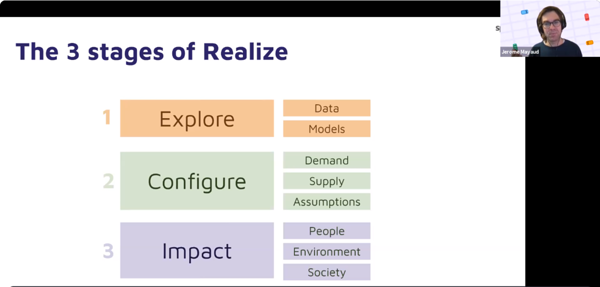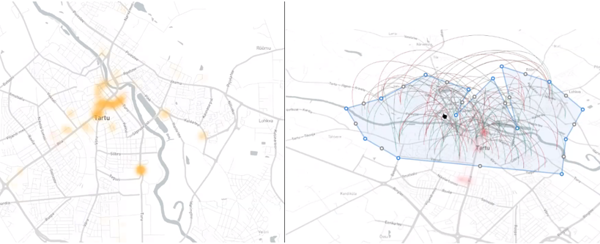On-demand transportation planning training with the Realize tool
Spare
Realize is a planning tool that allows users to easily prototype on-demand
transportation services in a simulation environment. Developed
by the Canadian mobility company Spare Labs, Realize was introduced by their expert Jerome
Mayaud on March 3rd, 2021.
In the format of an online seminar and part of the RESPONSE project activities, the training session gathered a number of public transportation agencies and local municipalities from Estonia and the Nordics.
The training gave useful insights into designing a demand-responsive transport (DRT) service. During the session, a simulation of the process of creating the DRT service using the Realize planning platform was carried out, giving a detailed overview of possible functions of this tool.
The platform's planning process is divided into three pillars: explore, configure, and impact.
The three stages of the Realize DRT-planning platform explained by Jerome Mayaud from Spare Labs. Photo: screenshot from the online training.
· Firstly, based on the operational data, the exploring phase enables to see what the transportation landscape looks like in the area of interest.
· Secondly, in the configuration stage, the users can design the prototype for the service while playing around with the demand and supply information, which can be added into the system. There is also a function of predicting different people's behaviour probabilities based on user data from other locations, as well as adding additional socio-economical information and modelling different scenarios.
· Thirdly, the impact phase illustrates which impacts this service potentially has on people, the society, and the environment.
It is crucial to notice that an efficient way of designing a DRT service is a bottom-up approach that means that the design starts from the passengers’ perspective. The underlying idea of this approach is that people make independent decisions on how they travel based on who they are and what they want to do.
The
data available on the platform enables to see where the different "hotspots"
in a chosen area are situated (where people live, where they work, where they use
healthcare services etc.). The user of the Realize tool can create the zones
for the transport service based on this information.
Hotspots
and frequent trips in the city of Tartu, Estonia’s second biggest city in the
Southern region of the country. Photo: Screenshot from the Realize platform training.
You can see full recording of the training session HERE.
If you have any further questions about the Realize platform or its functions and possibilities, please contact Jerome Mayaud from Spare Labs directly at jerome@sparelabs.com.
The training was carried out as part of the RESPONSE project where Spare Labs is developing a travel demand and cost prognostication model for DRT services by July 2021.



